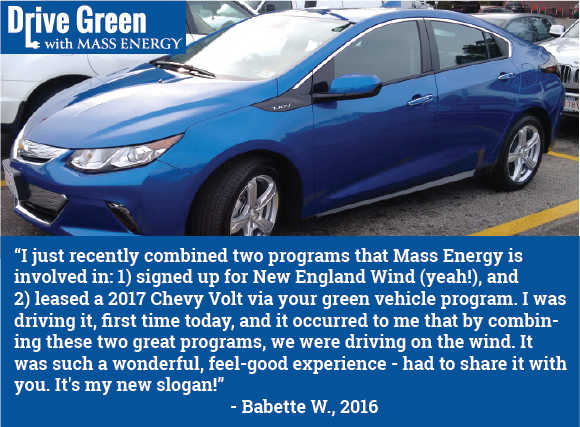Before we get into how electric cars can run on sunshine and wind power, let’s talk about old-fashioned cars that run only on gasoline engines. Some good news is that because of federal fuel efficiency standards (known as Corporate Average Fuel Efficiency), cars in 2025 will be much more efficient, on average, than today. Officially, carmakers will have to meet a standard of 54.5 miles on average for passenger cars and light trucks in 2025, which is about what a Toyota Prius (the version that does not plug-in) gets today. If we focus on emissions of carbon dioxide, the average new non-electric car in 2030 will emit about 182 grams per mile, down from 248 grams in 2017. That’s a nice reduction in carbon emissions of about a third.
The bad news is that we need to do much better. Don’t despair, because we have more good news. We can do much better, by adopting electric vehicles, whether they are plug-in hybrids (like the Chevy Volt or Prius Prime (which does plug-in) or all-electric battery powered (like a Tesla, the Nissan Leaf or Chevy Bolt).
In 2017, a Prius causes emissions about 2.5 times that of an all-electric car like the Bolt, even when the Bolt is powered by the ordinary electricity sold by National Grid or Eversource.
Running a car on electricity today in Massachusetts or Rhode Island results in far fewer emissions because the mix of resources on the grid is cleaner than burning gas and electric motors move a car more efficiently than gas engines. Our power mix is cleaner because oil and coal have been mostly replaced over the years by natural gas, hydro, and renewable energy sources like wind and solar. In 2017, a Prius causes emissions about 2.5 times that of an all-electric car like the Bolt, even when the Bolt is powered by the ordinary electricity sold by National Grid or Eversource. As you can imagine, a plug-in hybrid like the Volt would have emissions somewhere in between the Prius and Bolt.
Massachusetts and Rhode Island have state laws (i.e. Renewable Portfolio Standards) requiring annual increases in the percentages of wind, solar, and certain other qualifying renewable energy sources. For this reason, cars running on electricity will be responsible for fewer and fewer carbon emissions over time (the same goes for sulfur and nitrogen emissions). We asked Patrick Knight of Synapse Energy Economics to help us quantify the benefits and he kindly provides us with some ballpark figures. He wrote a great blog for us last April about how key EVs and heat pumps are to reducing greenhouse gas emissions.
The emissions associated with the all-electric will fall about 1.5% every year it runs, thanks to the ever-increasing state standards.
In 2017, an all-electric car in these states would have emissions of just 70 grams per mile. Compared to today’s average of 248 for non-electrics, that’s a reduction of 71%. You can have that overnight. But it gets better! The emissions associated with the all-electric will fall about 1.5% every year it runs, thanks to the ever-increasing state standards. So by 2030, emissions per mile of that 2017 EV will be 48 grams per mile, or just 20% of what that average 2017 gas-powered car will be emitting when they are both 13 years old. This shows you how important your consumer choices can be.
A skeptic might say that we cannot count on the electric car battery performing well after 13 years. That’s true, but we cannot count on any gas-powered car to get the same mileage either after 13 years. More importantly, we think policymakers will eventually take steps to increase the renewable energy content of our mix beyond what we’ve assumed here and that would make the electric car more valuable as a greenhouse gas reducer. Our numbers are based upon the execution of laws currently on the books, particularly the Renewable Portfolio Standard (RPS in Massachusetts and RES in Rhode Island) and a 2016 legislative requirement to include procure more hydropower. State legislators will almost surely increase the RPS/RES at some point (we’ll be advocating for that). And increasingly, cities and towns are exercising their right to buy more renewable power through community choice aggregation.
Now let’s use the flux capacitor and travel to 2030. By our estimate, the average non-electric car, thanks to the federal standard (assuming it’s not Trumped), will get about 49 miles per gallon and emit 182 grams per mile. By that time, given the progress we’re seeing with battery technology, we can expect to see all electric cars sold in 2030 emitting just 27 grams (assuming they are not all owned by people like Babette), just 11% of what today’s average car emits. That folks, makes it possible to imagine how we will reach the critical objective of reducing emissions 80% by 2050!
Furthermore, if you’re reading this, you might be one our green power members meeting your electricity needs with 100% renewable energy. In which case, your only emissions are a sigh of relief. And like Babette Wils, you can drive on the wind!




Comments